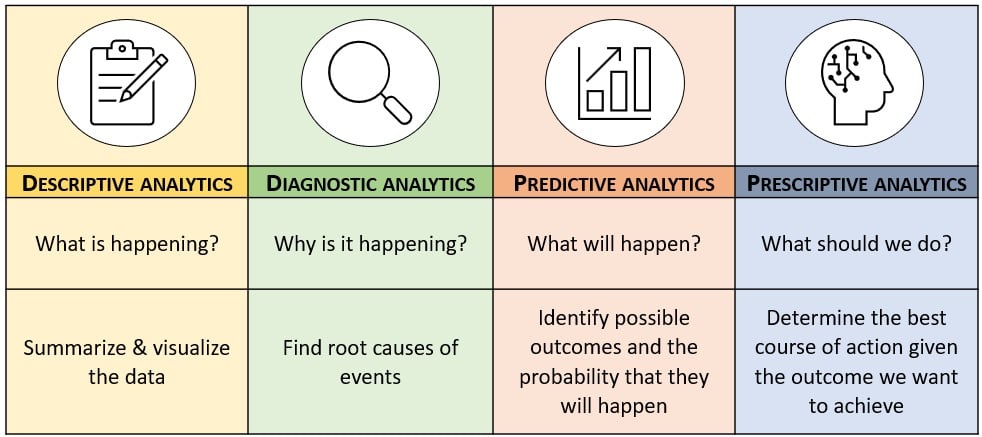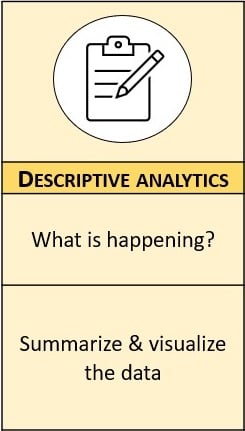From problem to insights
Data Literacy Case Study: Remote Working Analysis

Maarten Van den Broeck
Senior Content Developer at DataCamp
The data-driven process

Things to consider
- Quantitative vs. qualitative variables
- Influences the kinds of graphs, statistics, and analysis methods available
- Typically, a dataset contains a mix of both
- Selecting the right type of analytics
- Depends on the objectives of the analysis
- Look at your analytical questions to guide your choice
Quantitative vs. qualitative variables
Quantitative variables
- Describes something with (only) numbers
- Can be measured or counted
- Mathematical operations like summing or multiplying are possible
- Example: distance from work to home
Qualitative variables
- Describes something with categories
- Can be observed
- Mathematical operations are not meaningful unless using ranks or counts
- Example: the type of transport taken to go to the workplace
Types of analytics

Selecting the right type of analytics
Can we distinguish different remote working profiles?
- Do they differ in remote working habits?
- Do they differ in remote working needs?

Let's practice!
Data Literacy Case Study: Remote Working Analysis

